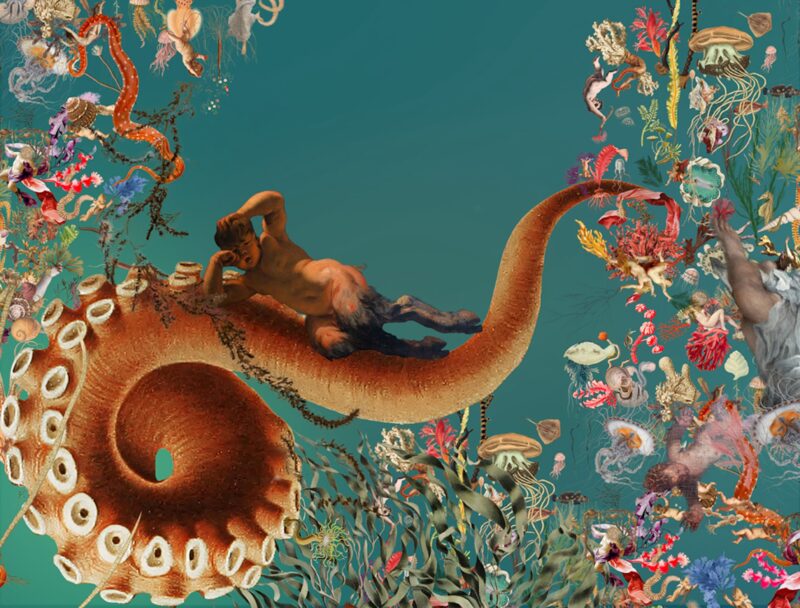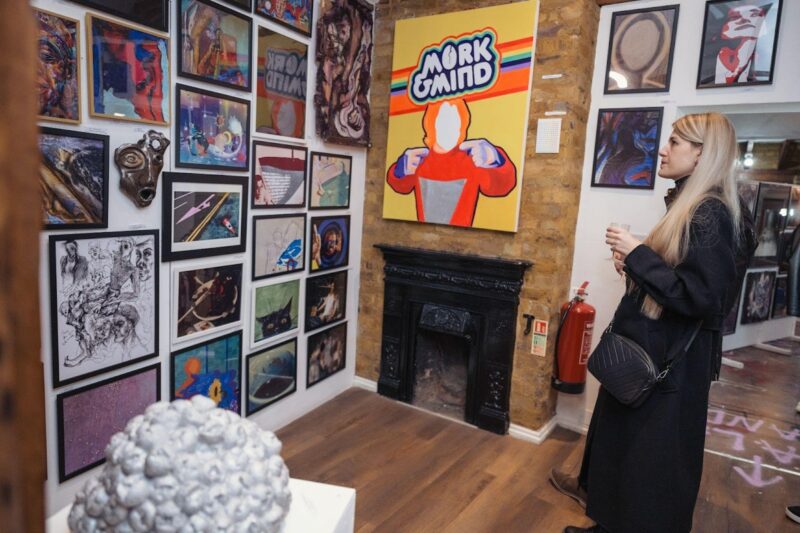Catriona Gallagher is a visual artist based between Northumberland (UK), and Athens (Greece). Her work unfolds poetical stories and critical observations in a variety of media: film, drawing, writing, installation. She navigates the overlooked details in our physical surroundings and the psychological landscapes mirroring them.
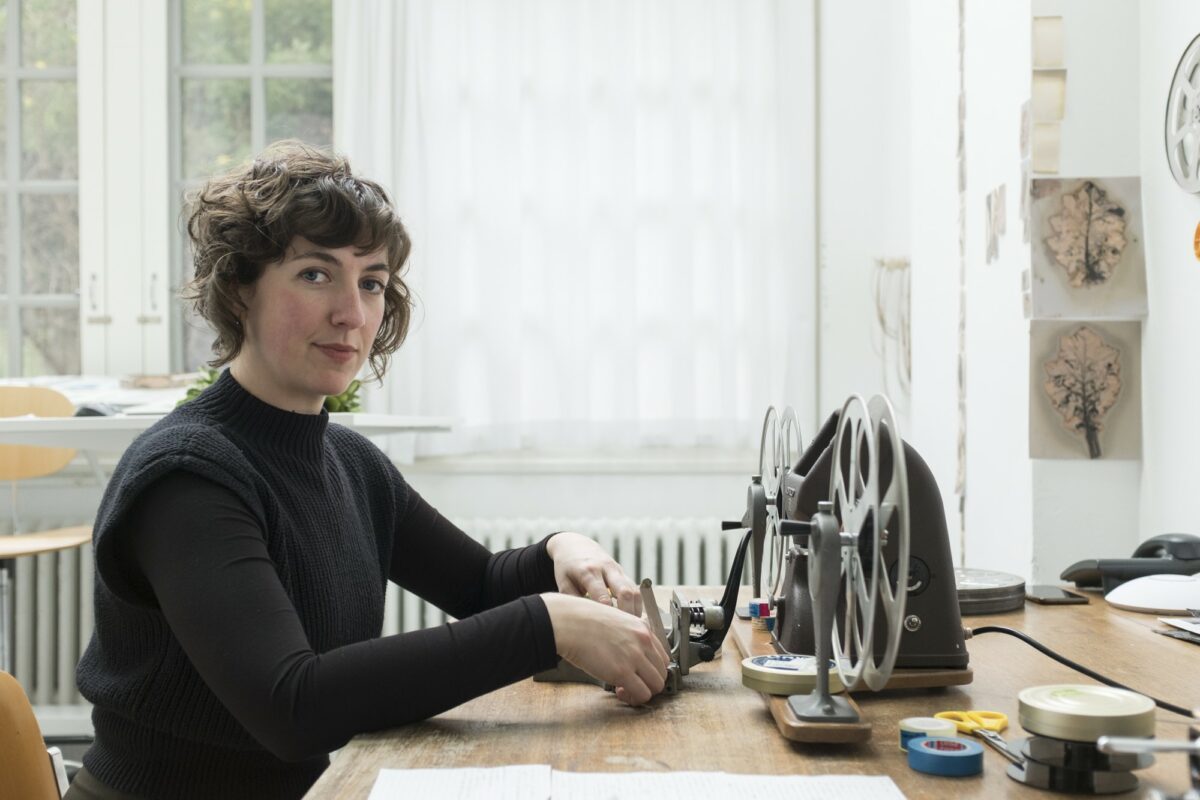
Gallagher’s poetics starts from the natural world, and especially the observation of plants, to investigate deeper meanings of existence. What can they teach us? How is the story of nature embedded within that of humans (and vice versa)? Why does the dominant discourse believe humans to be so detached from nature? How can we challenge this view? This are some of the questions that the artist’s work poses.
I met Catriona Gallagher during her residency at the British School at Rome, where she won the Bridget Riley Fellowship. This interview, part of the FOOD ART column, took place in occasion of her recent show and performance for ART DINERS (7-10 October 2023). The project, taking place in Villino Sartorio (Rome), called four artists to rethink their relationship to food and performance art, presenting a work that could be activated in a performative way.
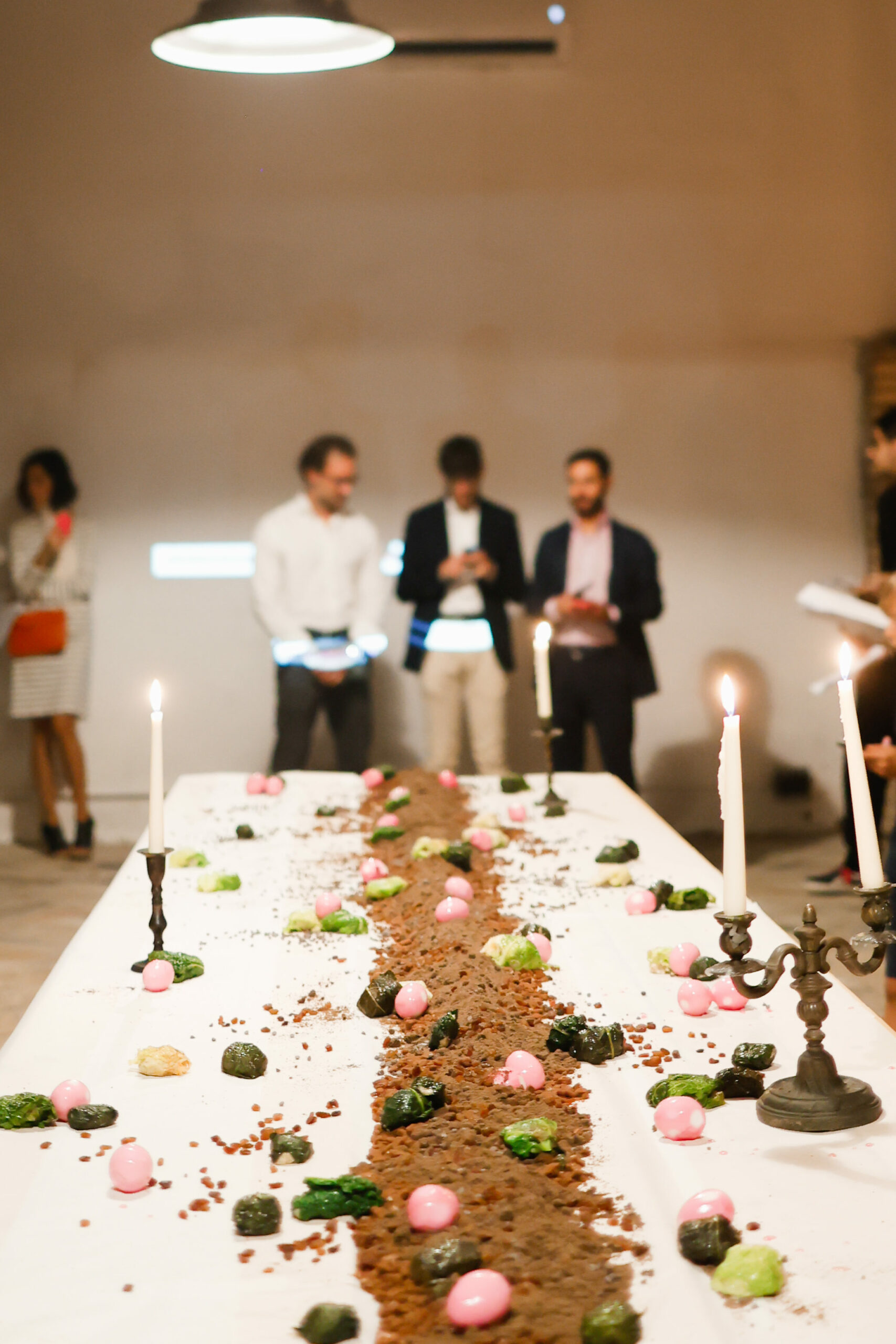
ART DINERS presents four seasons, each exploring a different theme: hallucinations, ritual, myth and metamorphosis. It combines visual art, performance and food by creating a new dialogue between the on-going practice of the artists involved and a sort of dinner revolving around a specially conceived menu and happening.
Read my interview with Gallagher below.
What is the most significant myth you have come across and why?
The most significant myth to me is probably the story of Daphne’s metamorphosis into a bay-laurel tree. It’s the myth I’ve looked at most recently in depth. There are many mythic metamorphoses of humanoid figures into animals, but transformations into trees and plants have the most significance to me. I think about human-animal metamorphosis as perhaps a warning of the bestial tendencies humans can show. We’re not as far from animals as the last two centuries of science would have us think, with man at the top of the pyramid and humans as separate from nature.
Or, perhaps, these metamorphoses are about how close we are to animal nature, really. But when a human metamorphoses into a plant, which is evolutionarily and behaviourally that much further away from us as mammals, what is the moral of the story? Is there a warning here, or does it perhaps tell us more about an ancient understanding of the animacy of non-human/non-animal entities, whether that’s plants, trees, rivers, or mountains. I’d like to hope so, and think that’s more useful to us today than the moralising tendencies of classical mythic interpretation in the Christian world of previous centuries. Reapproaching these stories with a contemporary mindset and with knowledge of research into the more-than-human and deep ecological relations between all beings that has emerged in the last 20 years, and popularised in the last 10, is really revealing.
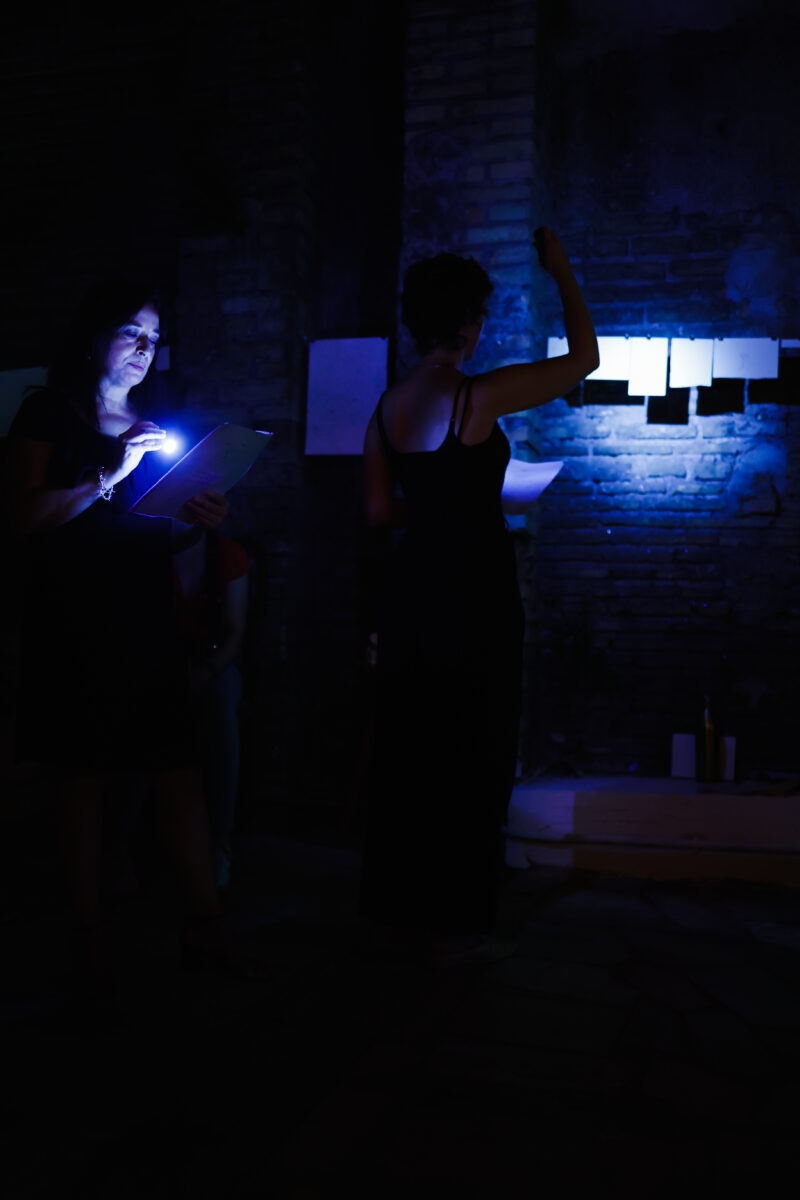
Which mythological figure would you want to meet? What would you tell them?
If I could, I would meet Artemis (Diana) of course. Perhaps this seems obvious, but the idea of a goddess of the wilderness, running through forests with a band of women followers who have a knowledge of hunting but a respect for nature, is totally compelling to me. I don’t think there’s much that would need to be said to Artemis though, other than “let’s go”, and to follow her into the woods.
Medusa is another mythological figure I’d love to meet, who’s deeply misunderstood as monstrous when actually her powers came as punishment for being a victim of rape by Poseidon. I have been thinking a lot about Medusa this summer since reading Stone Blind, a feminist retelling of Medusa’s story by Natalie Haynes. These feminist retellings are popular now, and whilst I can see that they might be a bit overly obvious, it is refreshing to read a story that you thought you knew from a different perspective. It’s surprising to see how you can reform opinions on familiar characters. I’m of the view that myths are there to be retold and told again, that there’s not one standard version but multiple versions of the same story. We can take what we need to keep them relevant to us today. They can be stories to learn from.
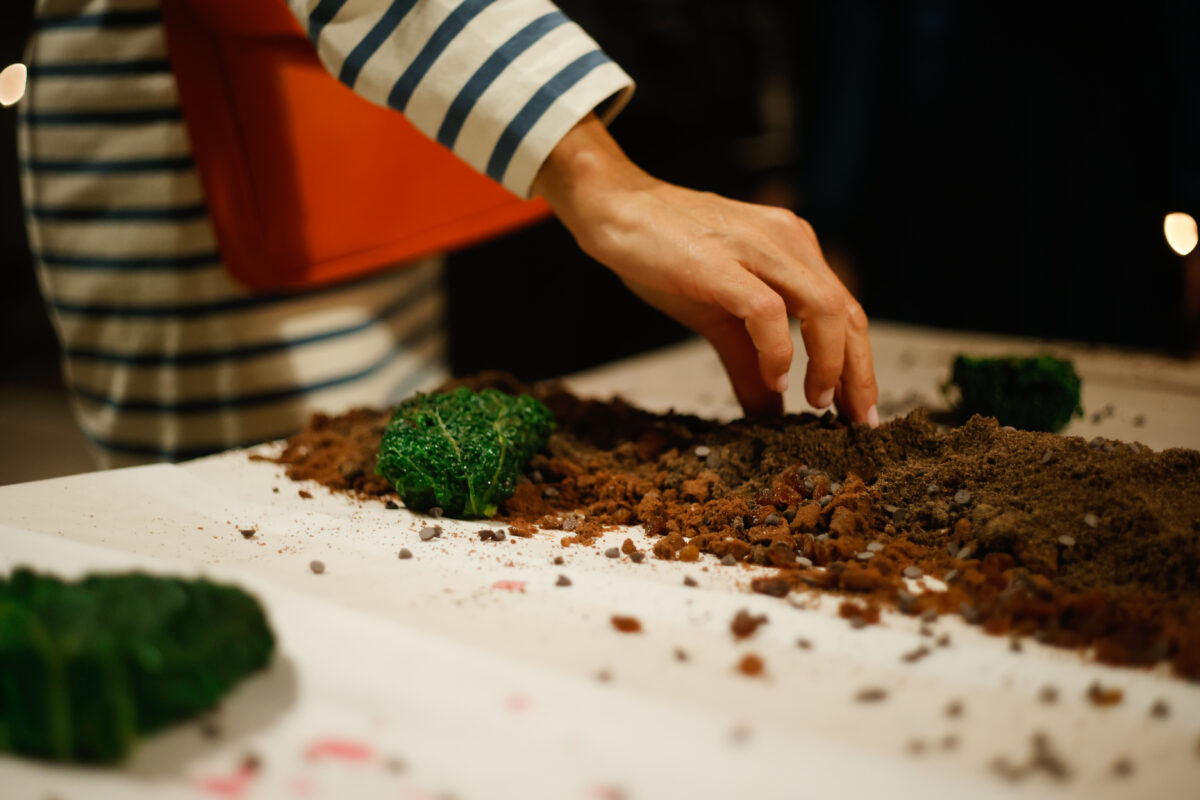
What is your greatest regret?
That I didn’t get to film a dear friend and mentor of mine, Sally Razelou, before she died during the pandemic. She was the custodian of the garden of Sparoza just outside Athens, an experimental dry garden established over the last 30+ years and home to the Mediterranean Garden Society, where I volunteered as a gardener on and off since 2016. I wanted to make a film about the garden at Sparoza and Sally from my very first encounter with them. She was, and still is, such an important part of that place and to all those who have visited and helped there over the years.
Sally was camera shy and it took me a long time to convince her to let me film her. She agreed when she proposed to teach me her technique for pressing plants and flowers to collage into landscapes. That was another of her gifts, alongside an astonishing memory for plants and perception for their needs, as well as a love of poetry and a tendency to write her friends exquisite letters. She lived an incredible life and had such wisdom and stories to tell, and I’m devastated that I won’t get to capture that on camera or hear her voice again, even if I can still make a film about the garden in her memory. It’s a reminder to just get on and get things made, rather than thinking and planning too much, waiting for the right moment.
And the thing that satisfied you the most?
That would definitely be finishing Perdikaki and completing the Pellitory Study after 6 years (if a project can ever really be completed, or given closure). It was such a slow and gradual project that unfolded alongside a very volatile but exhilarating period of my twenties living in Athens. Back then, I was working precariously as an English teacher alongside setting up A-DASH project space with the team. There were multiple occasions when I ran out of steam and nearly dropped the project altogether. Eventually, I persisted and plugged away, I couldn’t let it go.
Everything got easier when I invited other people into the process, from the actors John Bicknell and Maroula Antoniadou whose characters gave the essential dialogue required to unfold the story’s major themes, to the co-editor Nikoleta Leousi who helped me seeing what I was aiming for in the mass of footage I had gathered, and my gifted friend Alyssa Moxley, who composed the music with participations from Christos Bourantas and Thodoris Pistiolas. The music still makes my heart swell when I haven’t heard it for a while. We got the film edit and story complete with a big final push in 2018. It’s still the most complex and ambitious project I’ve attempted. Revisiting it always brings me new revelations about what I was trying to achieve and what I want from my artwork, how I want it to speak to people. Finding new audiences for the work, hearing that people get so much from the film, still bowls me over.

What is your “project in the closet”?
I have several. One is the film about the garden and Sally as I mentioned above, which might still get made but in a different way. Lately, I also have this itch to get back to casting. Although I studied sculpture and had a good training in wood & metal and wax & bronze casting techniques at Edinburgh College of Art, I got excited about making video halfway through my degree. I think I was content to work in that, drawing & writing over the past 10 years, as they were the most transportable techniques I could take with me as I moved around. But now I’m in a studio in Athens with some of the sculptors I met in Edinburgh again, and my mind is full of ideas for casting and mold making. Gypsum, plaster, concrete, wax, latex: all these liquid things that can solidify into objects. It’s a relief to feel settled enough that my mind is entering that process again. I’m keen to get my hands into a bucket of plaster again soon.
If you were to associate a dish to your visual language, what would that be?
Somehow a salad makes the most sense to me! Hear me out – I don’t mean a boring salad. I mean a really good, complex and interesting dish, full of different ingredients and textures: a mass of different leaves, other vegetables or fruit, something with protein like cheese or pulses, and a banging dressing – a rich olive oil and a lot of lemon or vinegar, salt, something to give sweetness – everything in balance. I ate an incredible salad in Rome this Spring with a load of wild green leaves picked locally, a perfectly balanced dressing, big chunks of lemon pith (I never realised how delicious that can be), some roasted nuts and a generous sprinkling of sumac. It was surprising and utterly addictive; we ordered it again and again.
This is what I aim for my visual language to be. Perhaps it seems simple or boring at first but it’s all nourishment. Only someone who really gets how flavours balance could execute it. Understated but satiating, deep communication between ingredients (thinking about ecology), lots of different elements and textures (I always think of film as the perfect way to bring together image, sound, text and time), something with a clear relation to its surroundings (I don’t think I’ve ever made work that doesn’t respond to its precise locality), something that needs chewing and thinking over (my work is not so much aimed towards an aesthetic but more the way I want you to think or change your mind, a complex knot of research, the need to chew things over to get what you need to out of it). Something unexpected that stays with you.

What is the most surprising or extravagant thing you associate with food?
My thoughts on food are definitely inflected by Greek summer in Aegean islands at the moment. The first thing that comes to mind is sea urchin eggs: that mad taste like the sea has been concentrated a hundred times over. I love how seafood and shellfish create a blend of revulsion and disgust at first, then met by a feeling of indulgent mouth-fascination. I felt the same way about oysters when I first tried them as a teenager. They have this duality of extravagance in some settings but were also a commonplace staple food. Think of the west coast of Scotland and Ireland in previous centuries (oysters alongside a pint of Guinness still blows my mind).
I’m thinking a lot about whether it’s okay to consume these types of seafood (caught by hand). Think of moray eel! They fill me with a heart-in-the-mouth dread when I see them and simultaneously a deep desire to watch them winding through rocks like ribbons, without forgetting they have a double set of teeth and are fairly aggressive to swimmers. I’m aware that consuming any kind of animal from land or sea must be undertaken with responsibility and respect if consumed at all. Yet, the immediacy of seeing a creature in the wild, catching it responsibly and humanely and consuming it is the only way I’d want to eat other creatures, ideally.
ART DINERS, Villino Sartorio, Via Tiburtina 213, Rome
Next Season: 25th – 27th November
For info: artdiners@gmail.com

